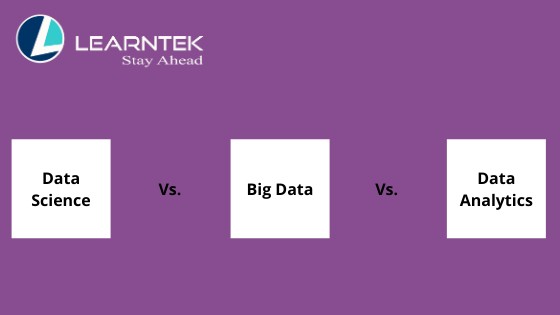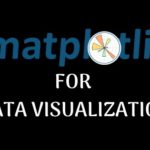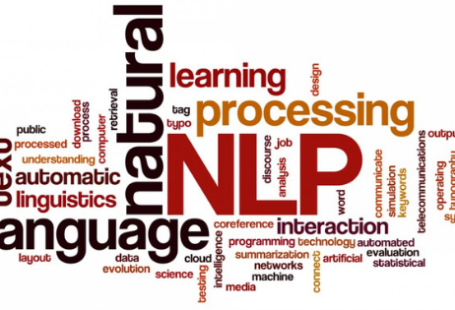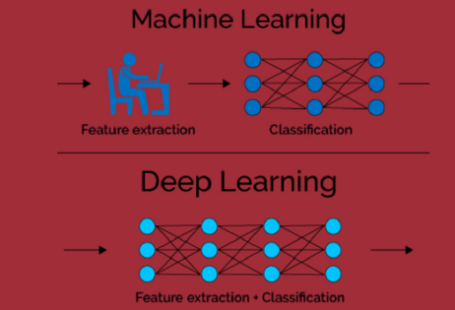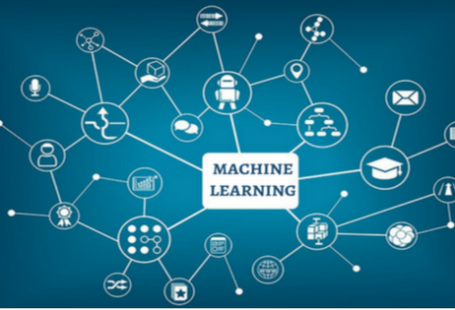Information is all over the place. The volume of digital data that occurs is increasing rapidly, doubling every two years and transforming our way of living. A Forbes article notes that data is rising more exponentially than ever. By the year 2020, for every human being on the planet, approximately 1.7 megabytes of new information will be generated every second, which makes it extremely necessary to know the basics of the sector at least. It is where our future lies, after all.
Data Science Vs. Big Data: All You Must Know About
We live in a world that is powered by numbers. The volume of digital data is increasing day by day and further, is also changing our lifestyles. Now that Hadoop and other technologies have solved the storage problem, the main focus on technology has moved to process this massive amount of data. When we are thinking about data processing, Data Science vs. Big Data & Data Analytics are the words one might worry about, and they have always been confusing.
In this article, we will distinguish between Data Science, Big Data, and Data Analytics depending on what it is, where it’s used, the qualifications you need for becoming a data specialist, and the salaries that you can earn in each field.
The need for their preservation also increased as the world entered the era of big data. Until 2010 it was the main challenge and worried about the business industries. The main focus was to develop systems and data storage solutions. All the concepts that you see in sci-fi movies in Hollywood will turn Data Science into reality. Artificial Intelligence is the foundation of data science. So learning what Data Science is and how it can add value to your company is very critical.
A Bit More About the Difference Between Data Science And Big Data
The word “big data” applies to data that is so massive, quick, or complicated that processing using traditional methods is challenging or impossible. For analytics, the process of collecting and processing large amounts of information has been around for a long time. But the big data idea gained momentum in the early 2000s when Doug Laney, an industry analyst, formulated the now-mainstream interpretation of big data as the three Vs:
- Volume: Companies collect data from a variety of sources, including business transactions, smart devices (IoT), manufacturing apps, images, social media, and more. Storing it would have been a challenge in the past-but affordable storage on systems such as data lakes and Hadoop has eased the pressure.
- Velocity: Information flow to companies at an unparalleled pace with the increase in the Internet of Things and must be managed promptly. RFID tags, cameras, and smart meters fuel the need to maintain such torrents of data in almost real-time.
- Variety: Variety relates to the different kinds of formats in which the data is developed well as stored.
First, let’s begin by understanding what these terms mean and then will learn more about data science vs. big data vs. data analytics.
What is Data Science?
Data Science is an area dealing with unstructured and structured data and involves anything related to data cleaning, planning, and review.
Data Science is the synthesis of research, engineering, technology, problem-solving, ingeniously collecting information, the opportunity to look at things differently, and results processing, planning, and synchronization tasks. It is, in simple terms, the umbrella of methods used when seeking to obtain knowledge and data information.
What is Big Data?
Big Data applies to humongous volumes of data that can’t be easily handled by current conventional software. Big Data analysis starts with the raw data that is not aggregated, and most often, can not be processed in a single computer’s memory.
Big Data inundated an enterprise daily, a buzzword that is used to characterize vast volumes of data, unstructured, and organized alike. Big Data is something that can be used to evaluate information that can lead to better business decisions and movements.
Gartner’s concept of Big Data is, “Big data is high-volume and high-velocity or high-variety knowledge assets that involve cost-effective, advanced ways of information processing that allow enhanced analysis, decision-making, and automation of operation.”
What is Data Analytics?
Data Analytics is the raw data science for determining knowledge. Data Analytics requires implementing an algorithmic or mechanical method to extract information and, for example, to look for significant connections between different data sets. It is used in many industries to allow companies and organizations to make better decisions and to validate and disprove existing theories or models.
Data Analytics’ emphasis is on inference, which is the method of drawing conclusions that are based solely on what the analyst knows already. Now let’s switch to the Data Technology, Big Data, and Data Analytics software.
Applications of Data Science
Internet Search
Internet Search engines allow the use of data science techniques to deliver the best answers in a fraction of seconds for search queries.
Digital Advertisements
The whole scope of digital marketing uses data analysis technologies-from posters to digital billboards. That’s the mean explanation of why digital ads are having higher CTRs than conventional ads.
Recommender Systems
The recommender systems not only make it easy to find relevant items from billions of available products but also add a great deal to user experience. Several businesses are using this method to promote their products and recommendations by the user’s demands and knowledge importance. The recommendations are based on the search results before the customer.
Applications of Big Data
Big Data for Financial Services
Big data for their financial services are used by credit card companies, retail banks, private wealth management advisories, insurance companies, hedge funds, and institutional investment banks. The common problem across all of them is the massive amounts of multi-structured data that exist in various fragmented structures that can be solved by big data. Big data is thus used in several forms, such as:
- Customer analytics
- Compliance analytics
- Fraud analytics
- Operational analytics
Big Data in Communications
Top priorities for telecommunications service providers include gaining new users, maintaining clients, and growing across existing user bases. The answers to these problems lie in the ability to combine and interpret the constant volumes of customer-generated data and machine-generated data that are being produced.
Big Data for Retail
Brick and Mortar or an online e-tailer, knowing the consumer best to satisfy them is the key to keeping the game and being successful. It needs the ability to check all the diverse data sources which include retail transaction data, store-branded credit card data, weblogs, social media, and loyalty program data, which businesses manage every day.
Applications for data analytics
Healthcare
The main challenge for hospitals with a strengthening of cost controls is to manage as many people as they can effectively, taking into account the enhancement of the quality of care. Instrument and system data are widely used to monitor patient movement, diagnosis, and equipment used in hospitals as well as to automate it. It is projected that a productivity increase of 1 percent will produce more than $63 billion in savings in global healthcare.
Travel
Use smartphone/weblog and social media data analysis, and data analytics may improve the buying experience. Travel sights can get insight into the desires and expectations of the passenger. Goods can be up-sold by correlating current sales by personalized bundles and deals with the resulting shopping rise in browse-to-buy conversions. Data analytics can also offer customized travel suggestions based on social media information.
Energy Management
Many businesses use data analytics for energy management, including smart grid control, electricity storage, energy distribution, and power building automation. Here the program focuses on scheduling and tracking network equipment, dispatching crews, and handling service outages. Utilities can integrate millions of data points into network performance and enable engineers to use the analytics to track the network.
Gaming
Data Analytics allows us to automate and invest data collection both inside and across sports. Gaming companies provide visibility into the players ‘ dislikes, partnerships, and interests.
Difference Between Data Science and Big Data
Using traditional methods of data analysis and Big Data methodology can not be easily achieved. Alternatively, unstructured data requires specialized modeling methods, software, and frameworks for organizations to derive knowledge and details as necessary. Data science is a scientific approach to the analysis of big data utilizing analytical and computational theories and computing devices. Data science is a specialized field that combines multiple fields such as statistics, mathematics, smart data capture techniques, data cleaning, mining, and programming to prepare and coordinate big data for smart analysis to extract insights and knowledge.
Today, we are all seeing an enormous rise in knowledge produced globally and on the internet to contribute to the idea of big data. Data science is a problematic area due to the complexities involved in integrating and implementing various methods, algorithms, and advanced programming techniques to conduct smart research of vast volumes of data. Therefore the study of data science has developed from big data, or it is inseparable from big data and data sciences. There are, however, a lot of differences between big data and data science.
This term applies to the extensive collection of heterogeneous data from different sources and is therefore not accessible in the standard formats of the database that we usually know. Big data includes many types of data that are organized, semi-structured, and unstructured, easily found on the internet. Big data comprises of:
- Unstructured Data: social networks, documents, forums, posts, visual images, digital audio/video feeds, online data outlets, mobile data, sensor data, web pages, etc.
- Semi-structured Data: XML files, log archives of the program, text files, etc.
- Organized Records: RDBMS, OLTP, transaction data, and other standardized types of data.
The Critical Difference Between Data Science Vs. Big Data Vs. Data Analytics
Big data is needed by companies to increase efficiencies, understand new opportunities, and boost productivity. In contrast, data science offers the tools or frameworks for timely understanding and exploiting the value of big data.
There is no limit to the amount of valuable data that can be obtained by organizations. Still, data analysis is required to use all this data to get meaningful information for operational decisions.
Big data is distinguished by the range and magnitude of its velocity (popularly known as 3Vs), while data science includes the tools or strategies for processing 3Vs characteristic data.
Big data gives success capacity. Nonetheless, finding out knowledge details from big data to leverage its performance enhancement ability is a significant challenge. In addition to the deductive and inductive logic, data science utilizes analytical and quantitative methods. Takes the responsibility of uncovering the secret insightful information from a vast network of unstructured data while assisting companies in understanding the value of big data.
Big data processing performs the extraction of useful data from large volumes of data sets. Contrary to research, data science makes use of machine learning techniques and mathematical approaches to teach the robot to learn to make decisions from big data without much programming. Thus data analysis should not be associated with the modeling of big data.
Big data is more connected to programming (Hadoop, Apache, Hive, etc.), cloud processing, and information and analytics resources. It is against data science that focuses on business decision approaches, data distribution using the above-listed mathematics, statistics, and data structures and methods.
It may be remembered from the above distinctions between big data and computer technology that data science is integrated into the definition of big data. Data science plays a significant role in many fields of use. Data science relies on big data to gain useful insights through a predictive analysis in which findings are used to make intelligent decisions. The data analysis is, therefore, included in big data rather than the other way round.
Skills Required to Become a Data Scientist
- Education: 88 percent have a Master’s degree, and 46 percent have a Ph.D. in-depth knowledge of SAS or R: R is usually chosen for data science.
- Python Coding: Python, along with Java, Perl, C / C++, is the most popular scripting language used in computer sciences.
- Hadoop Platform: The experience of the Hadoop framework is still desired for the sector, although not always a prerequisite. Giving any practice at Hive or Pig is also an immense selling point.
- SQL Database/Coding: while NoSQL and Hadoop have become a significant part of the Data Science context, it is still preferred if complicated queries can be written and performed in SQL.
- Working with Unstructured Data: A data scientist should be able to work with unstructured data irrespective of it being on video feeds, social media, or audio.
Skills Required To Become A Prominent Data Specialist
- Analytical skills: The ability to make sense of the mountains of data you are receiving. You will be able to determine, with analytical skills, which data is essential to your approach, more like problem-solving.
- Creativity: You need the ability to create new methods of collecting, presenting, and evaluating a data strategy. It is an incredibly vital capability to acquire.
- Mathematics and Mathematical Skills: true, old-fashioned “number crunching” in data science, data analytics, or big data.
- Computer Science: Computers are the working-horses behind every technique of results. Programmers will have a constant need to create algorithms to filter insights into the results.
- Business Skills: Big Data experts will need to understand the business priorities in motion, as well as the fundamental mechanisms that fuel business growth and its income.
Skills Required to Become a Data Analyst
- Programming skills: Understanding the programming languages is essential, and for any data analyst, Python is necessary.
- Statistical knowledge and mathematics: Data scientists are a must for concise and inferential statistics and conceptual projects.
- Machine learning abilities: The ability to map and translate raw data into another format that allows data to be accessed more efficiently is an equally important skill to become a data analyst. Expertise in teamwork and image visualization
Salary in the Fields of Data Science Vs. Big Data Vs. Data Analytics
Although in the same area, different wages are received by each of these academics, data scientists, prominent data experts, and data analysts.
Data Scientist Pay According to Glassdoor, a data scientist’s average salary is $108,224 per annum.
Big Data Professional compensation According to Glassdoor, a prominent data specialist’s average salary is $106,784 per annum.
Data Analyst Pay The average salary for a data analyst is $61,473 a year, according to Glassdoor.
The salary increases according to the knowledge and expertise that you have taken to the table.
Now that you know the differences that you find are best suited for you-Data Science? Big Data? Or is it computer analytics? Now you must be clear with the concept of data science vs. big data vs. data analytics.
This article discusses the emerging field of Big data and computer science. Big data is here to remain in the years ahead as, according to current trends in data production, new data will be produced at a pace of 1.7 million MB per second by 2020, according to Forbes Magazine projections. The big data explosion will have immense potential, and companies need to handle it effectively. Here, the area of data science is discussed for its role in understanding big data’s promise. Data science is rapidly evolving, with new techniques continuously being built that can help data science practitioners into the future.
Hope this article has helped you understand the differences between data science vs. big data vs. data analytics.
_________________________________
AUTHOR PROFILE – VAISHALI SONIK IS AN ENTHUSIASTIC WRITER & EXCEPTIONAL INFLUENCER. WITH HER INTEREST IN MULTIPLE AREAS OF INTEREST, SHE HAS BEEN A PART OF SEVERAL AGENCIES SUCH AS Apptunix, DatatoBiz, Cityfrill, ProdigyPest, etc.

